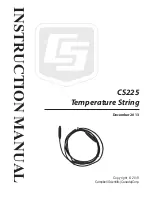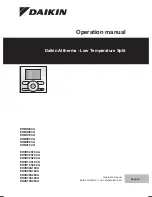
BASIC OPERATION AND FEATURES
SX TRANSISTOR CONTROL
Page
6
Section 2.1.6 On-Board Coil Drivers and Internal Coil
Suppression
A coil driver for the LINE contactor is on-board the control
card. This contactor must have a coil rated for the vehicle
battery volts.
Section 2.2 System Protective Override
Section 2.2.1 Static Return to Off (SRO)
This inherent safety feature of the control is designed to
prevent the driver from starting the vehicle with the
accelerator pedal depressed. If the pedal is depressed
when the key is turned on, the control will not operate until
the accelerator pedal is no longer depressed.
Section 2.2.2 Accelerator Volts Hold Off
This feature checks the voltage level at the accelerator
input whenever the key switch is activated. If, at start-up,
the voltage is greater than 0.9 volts, the control will not
operate. This feature assures that the control is calling for
low speed operation at start up.
Section 2.2.3 Pulse Monitor Trip (PMT)
The PMT design contains three features which shut down,
or lock out, control operation if a fault conditions occurs
that would cause a disruption of normal vehicle operation:
Look ahead
Look again
Automatic look again and reset
The PMT circuit will not allow the control to start under the
following conditions:
The control monitors both armature and field FET's at
start-up and during running.
The control will not allow the line contactor to close at
start-up, or will drop it out during running, if either the
armature or field FET's are defective, so as to cause
uncontrolled truck movement.
Section 2.2.4 Thermal Protector (TP)
This temperature sensitive device is internal to the power
transistor (Q1) module. If the transistor's temperature
begins to exceed the design limits, the thermal protector
will lower the maximum current limit, and maintain the
transistors within their temperature limits. As the control
cools, the thermal protector will automatically reset,
returning the control to full power.
Section 2.2.5 Low Voltage
Batteries under load, particularly if undersized or more
than 80 percent discharged, will produce low voltages at
the control terminals. The SX control is designed for use
down to 50 percent of a nominal battery voltage of 36-84
volts, and 75 percent of a nominal battery voltage of 24
volts. Lower battery voltage may cause the control to
operate improperly, however, the resulting PMT should
open the Line contactor, in the event of a failure.
Section 2.3 Diagnostics
The control detects the system's present operating status
and this status can be displayed to either the Dash Display
or the Handset.
Section 2.3.1 Status Codes
Section 2.3.1a Standard Status Codes
The SX control has a wide variety of Status Codes that
assist the service technician and operator in trouble
shooting the vehicle. If mis-operation of the vehicle occurs,
a status code will be displayed on the Dash Display for
vehicles so equipped, or be available from the status code
displayed when the Handset is plugged into the “Y” plug of
the logic card.
With the status code number, follow the procedures
outlined in DIAGNOSTIC STATUS CODES to determine
the problem and appropriate corrective action.
Note: The Status Code Instruction Sheets do not purport to
cover all possible causes of a display of a "status code ".
They do provide instructions for checking the most direct
inputs that can cause status codes to appear.
Section 2.3.1.b Stored Status Codes
This feature records the last 16 "Stored Status Codes" that
have caused a PMT controller shut down and/or disrupted
normal vehicle operation. (PMT type faults are reset by
cycling the key switch). These status codes, along with the
corresponding BDI and hourmeter readings, can be
accessed with the Handset, or by using the RS 232
communications port and dumping the information to a
Personal Computer terminal.
Section 2.3.2 Odometer Readings
This feature will transmit the miles of use of the traction
control to the Dash Display.
Updated Sept 2019







































